At least 25 years ago, the name “McLaren” entered the vernacular of even casual car fans thanks in part to an iconic car called the F1.
Before the F1, McLaren was mostly recognized by motorsports fans, as it was one of the first outfits to utilize carbon fiber in the pinnacle of road racing, Formula One.
The McLaren F1 was not only an amazing car but the kind of car that young kids from the ‘90s would plaster on their bedroom walls alongside exotic cars from Ferrari and Lamborghini. Reading about it in magazines and newspapers, kids would learn that it was the fastest car of its time thanks in part to an unbelievable power-to-weight ratio and out-of-this-world engineering solutions. I’d never thought I’d get to experience the brilliance of the F1 outside of a video game, but all these years later, I find myself closer than ever – I’m in the driver’s seat of the company’s first more mainstream vehicle, the McLaren MP4-12C.
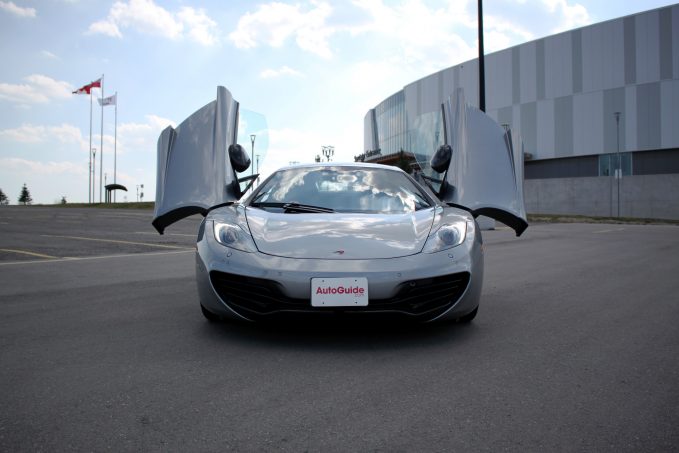
When it Arrived
Introduced in 2012, this car was more than McLaren’s “I’m-still-here” heat check. It brought some of the fantastic ideas that were found in that limited-run and very expensive F1 and brought it to a more accessible level.
Not that $200,000 is ever considered accessible, but when a car puts Ferrari and Lamborghini on notice, it’s quite the feat. Even today, five years after it was introduced, the MP4-12C (later shortened to simply 12C, before being replaced by the 650S) has features that are still impressive compared to the established exotic nameplates.
About that Chassis
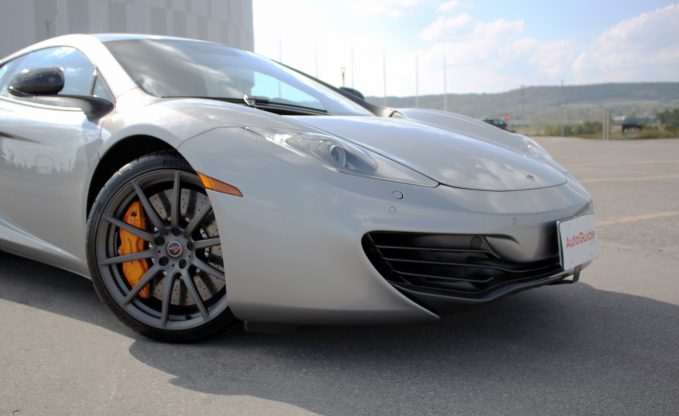
Like the F1, the MP4-12C features a carbon fiber structure because the exotic material helps keep weight down, which is an important part of the performance puzzle. For reference, Ferrari didn’t use carbon fiber in its competing car (at the time, it was the 458 but now it’s the 488) while the Lamborghini Aventador sports a carbon fiber monocoque. What this means is carbon fiber is still a rarity until you leap up into the realm of million-dollar hypercars, but since those cars tend to use hybrid powertrains, they’re still on the hefty side.
Advanced materials mean the 12C weighs just around 3,200 lbs but that’s only the beginning of what makes this car’s performance so good. A light, stiff car like this one needs proper grip, and that’s accomplished not just with tires, but with suspension. McLaren thought out of the box in developing this car’s handling as the 12C doesn’t have traditional sway bars. It keeps its balance by using a hydraulic suspension system, which has been difficult for other automakers to emulate since. McLaren’s does it all in-house, and all that data from its race cars in Formula One probably plays a big role in figuring out this advanced road car suspension.
Engine Feels Unlike Any Before
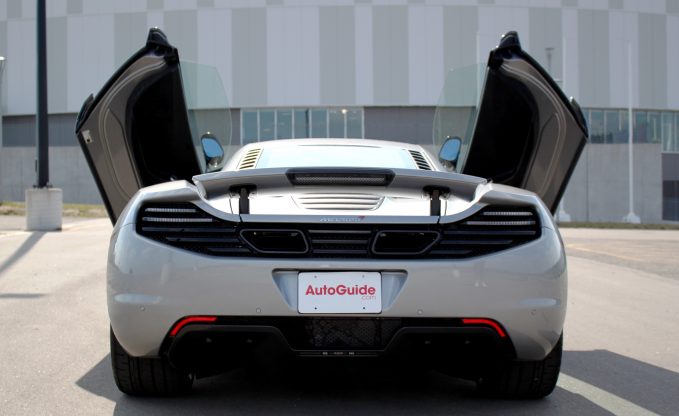
The final part of this equation is the powertrain. While the original F1 used a BMW-sourced, Formula 1-derived V12 engine that made more than 627 horsepower, the engine in the MP4-12C was an all-new design. A twin-turbocharged 3.8-liter V8 is mounted behind the driver and puts out just less than what the F1 managed. Originally rated at 592 horsepower, the company boosted the output a year later to 616 ponies. An unusual arrangement for turbocharged engines, the power is delivered all the way at the top of the rev range, past 7,000 rpm. On the other hand, torque is plentiful with 443 lb-ft that arrives as soon as 3,000 rpm.
The engineering and mechanics behind the car tell an interesting story. Just three people associated with the original F1 were still around to work on the MP4-12C. Looking at the traits that made the F1 special, it is commonly described as having a smooth and easy-to-use power and torque curve, making it reasonable to drive, rather than being a brute force application of everything all at once. The newer 12C is very much like that, and the way it builds power is unbelievably smooth, something that wasn’t expected when thinking about a twin-turbo V8 with this much power. With all that torque readily available, the power actually feels quite usable even in higher gears. It’ll get going no matter when you put your foot down, another element that makes it so livable.
Always Adapting
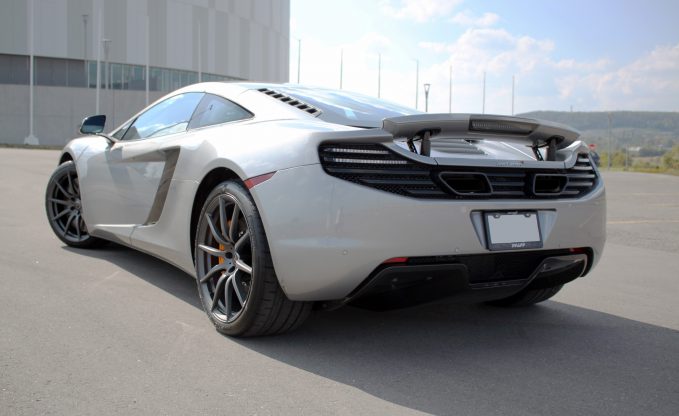
Speaking of gears, the car packs a seven-speed dual clutch transmission, one that feels very much like a manual transmission. Gear changes are noticeable, but not harsh or clunky. It’s smooth but has an exotic feel to it.
It’s important to bring up the different drive modes when discussing the transmission, which involves a multi-stage process that requires the driver to push an “Active” button before adjusting the powertrain and chassis settings. Both the chassis and powertrain have three settings: Normal, Sport and Track. With each setting noticeably increasing in intensity over the last, the track settings feel like the closest thing to being in a purpose-built race car. Seriously, I didn’t realize I had so many parts on my body that could jiggle until I put the 12C’s chassis settings in track mode. In the Sport and Normal modes, the car is much more… well, normal. Normal suspension settings are downright comfortable, feeling much like any other sports car would. Sport is that element toned up a notch, and the car feels really engaging and communicative, something that’s hard to find in these days of overly insulated cars.
How it Feels
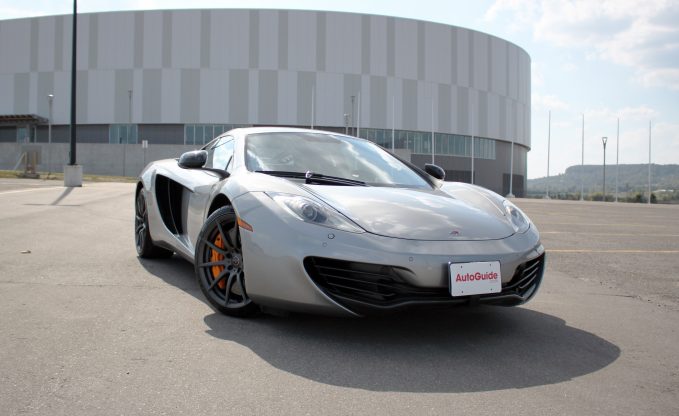
In fact, the tactility of the McLaren is one of its best features. Every control requires a bit more force or attention than I’m used to in more modern cars. The pedals feel stiff, as do the control stalks and there’s even a tough-feeling single-piece shift paddle that’s hinged on the steering wheel that is really interesting to use. As a result, the entire car feels more interactive. This is a concession, I suppose, as the old F1 featured a six-speed manual transmission and this one doesn’t, so everything else in this car seems much more immersive.
The car is blazingly fast. Highway speeds occur so quickly, you’ll be breaking the law before you even realize. Zero to 60 is said to be a riotous 3 seconds, and the car can supposedly hit 125 from a standstill in under 9 seconds when equipped with the right tires. Top speed is listed at 210 mph, which isn’t far off the F1’s longtime record holding peak of 230.
ALSO SEE: McLaren Shows Off Three Seat BP23 Hypercar Mule
The car has a lot of grip. The stiff chassis and advanced suspension help provide stability at speed, but there are some important aerodynamics at play here, too. An active spoiler uses the airflow to keep the rear end planted but also acts as an air brake when it’s time to slow things down. The F1 also had this kind of air brake feature, but with a smaller wing that also concealed vents for the brakes.
Complaints about the 12C are few. It’s far from sexy when compared to other supercars, and even the Porsche 911 Turbo S has an elegance to it that the McLaren can’t top. The British supercar also lacks a truly unique and head-turning soundtrack until it’s revved to its top end. These aspects were rectified with McLaren’s recent models because they definitely capture the attention of the public in an even more dramatic way than the 12C ever does.
Getting Into It
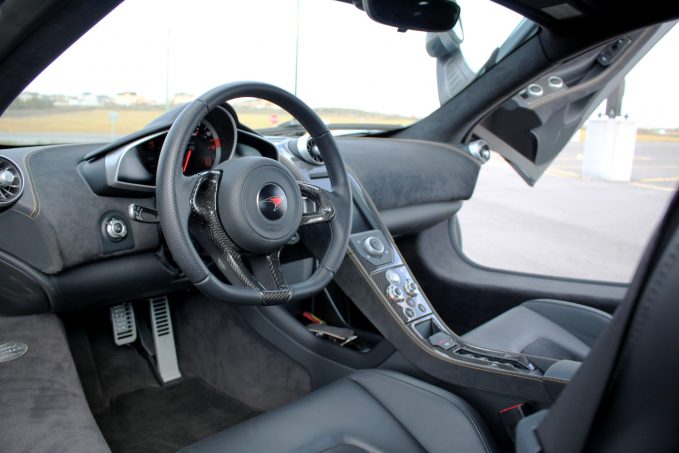
The doors are a bit awkward as well, as they don’t have an exterior handle. Instead, they’re touch-sensitive and you’ll need to stroke the vehicle just right in order to gain entry. It’s weird to explain to friends, but they get over it once the door glides upwards. Getting into the car is actually much easier than it looks, as wide sills are covered in nice, soft material that won’t abuse you when you get in and out. The seats are stiff but supportive. There are a number of adjustments to help keep you stuck in place, but they’re not the most intuitive.
Interior controls seem different for the sake of being different. The company put HVAC controls on the door panels, while the center console packs a vertical infotainment system. It’s a bit on the slow side, but then again, this car debuted in 2012 and this kind of responsiveness was considered quick back then.
ALSO SEE: Here’s a McLaren 720S Mega Gallery For You to Drool Over
Today, just a few years after the debut of the 12C, McLaren has expanded its lineup substantially. The Sports Series of cars includes the 570S and GT, as well as the 540C, which are all marketed to be liveable everyday cars with track-oriented performance. The Super Series is highlighted by the new 720S. It’s meant to push the limits of supercars, and based on the standard set by the 12C, I’d believe it. The Ultimate Series includes the P1, an ultra-rare hypercar that truly walks in the footsteps of the F1 with world-class levels of performance that represents the peak of what McLaren is capable of.
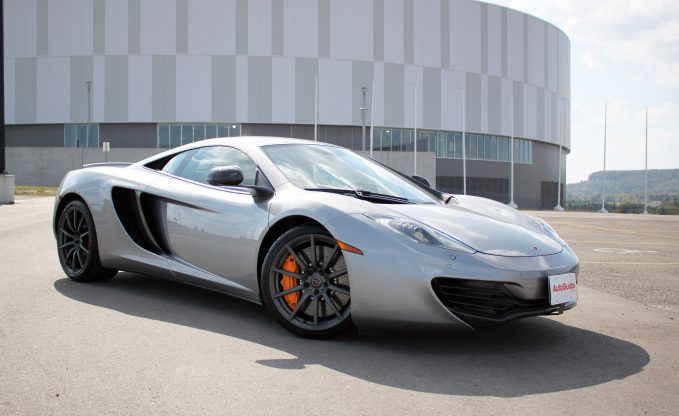
The Verdict: 2012 McLaren MP4-12C Retrospective
When the MP4-12C debuted, buyers were being asked to hand over $229,000 for a coupe or $268,250 for a droptop Spider model. But more than that, they were paying to be a part of the McLaren history books. They were getting a chunk of the F1’s supercar brilliance nearly two decades after the British automaker closed the books on that truly special car.


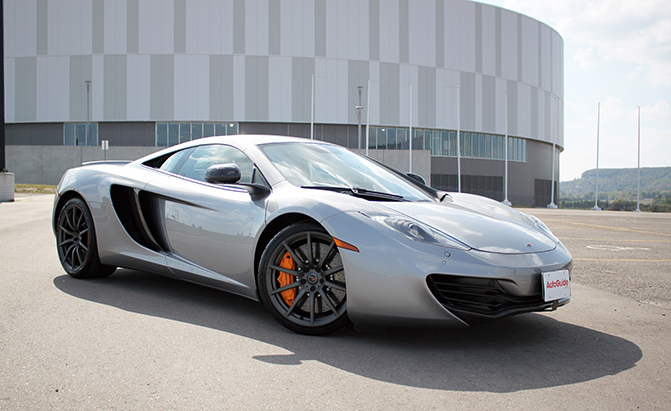
Leave a Reply